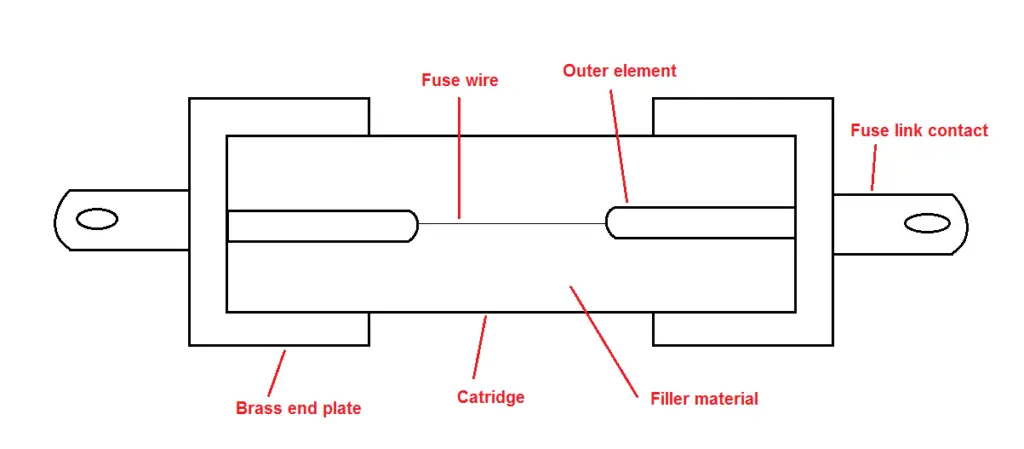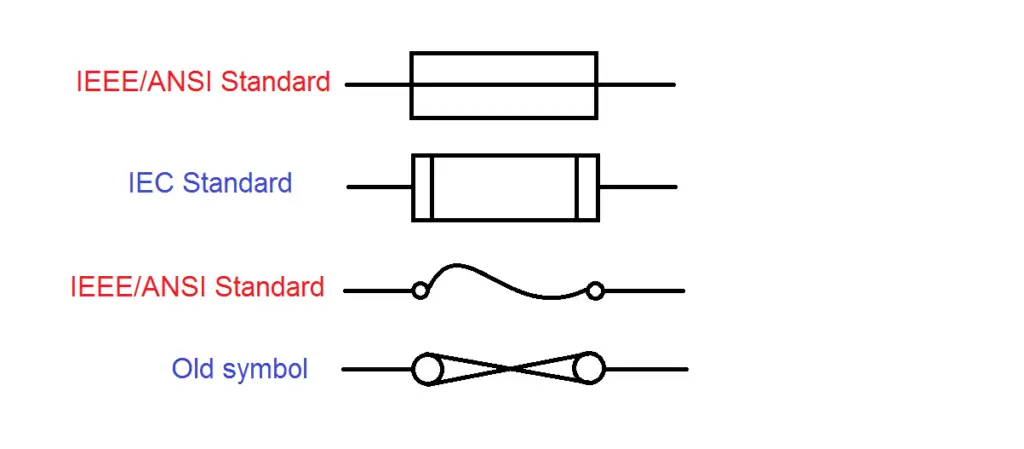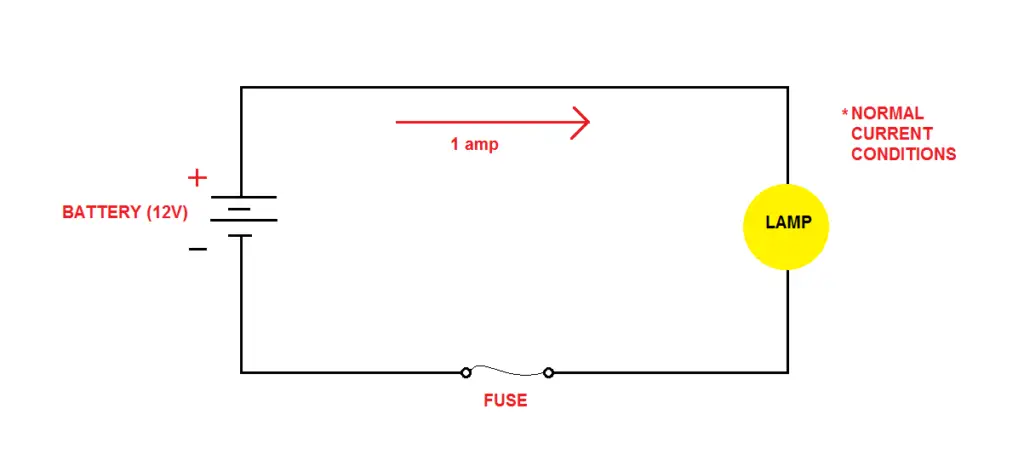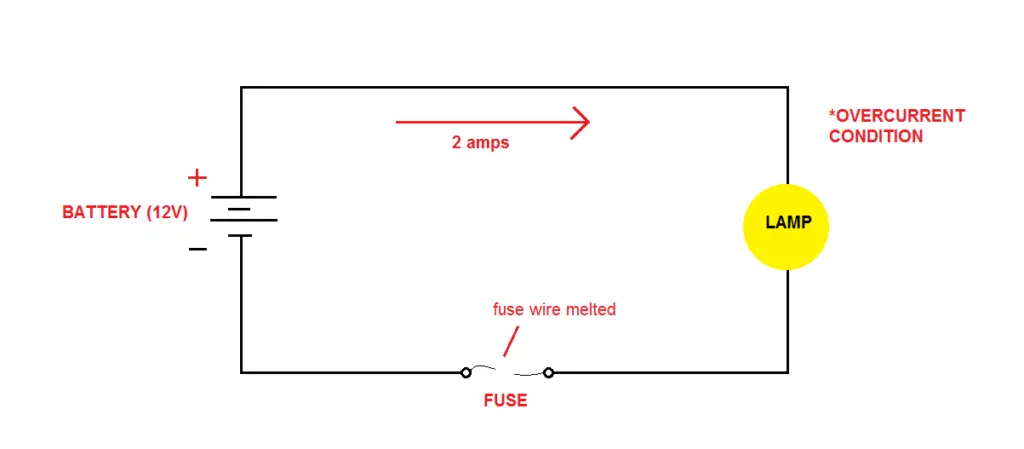What would we do without electricity?
It helps power electrical and electronic devices in our homes, businesses, schools, streets, airports, and the list goes on and on.
You might be reading this article on your mobile phone, or laptop, whose battery was charged using the awesome powers of electricity.
However, electricity is no laughing matter.
It can be highly dangerous to electrical and electronic devices that use it, as well as ourselves.
So when it comes to electricity, we need to have contingency plans in place to protect the devices, as well as ourselves from its raw power.
This contingency plan comes in the form of something known as a Fuse.
But, what does a fuse do in a circuit?
The fuse plays a vital role in electrical and electronic circuits. It’s main purpose is to fail under overcurrent conditions thereby interrupting the flow of this overcurrent which could damage electrical or electronic components.
This article will dive into more detail of what a fuse does in a circuit, as well as different applications where you find a fuse, what overcurrent is and why we need protection against overcurrent.
What is a fuse
The fuse is an electrical device that is designed to fail when subject to excessive currents that are not nominal in that particular circuit (I say particular circuit because every circuit is different having its own current limit).
The image below shows what the inside of the fuse looks like;

The fuse has many different versions of symbols that appear in circuit diagrams and schematics. Below are some of the most common;

You can see in the first diagram,at the heart of the fuse is the Fuse wire.
This fuse wire is the star of the show,whose job is to melt in the event of overcurrent conditions (which shall be discussed in the next section).
The *fuse wire is a thin wire* made of conductive material which has a low melting point (this melting point however, is not in the range of the nominal currents that it would be subject to).
What is over-current?
Every electrical and electronic device will have a Power rating.
This rating indicates the maximum values of Voltage and Current that devices must operate under to work effectively.
I say under because going over these values will cause damage to the device, circuit, and components.
Over-current, is an unwanted scenario when current levels rise above their nominal levels.
If the overcurrent lasts for a long time, it will damage components and circuits within the device.
There are multiple causes for overcurrents which include;
- Short circuits
- Excessive load
- Incorrect design
- Arc fault
- Ground fault
What does a fuse do in a circuit?
So, we know the dangers that electrical and electronic circuits are subject to which are Overcurrents and that a fuse is a device designed to fail under high currents.
It’s a match made in heaven!
So, what does a fuse do in a circuit?
Put simply, the fuse has one job in a circuit, which is to fail when subject to excessive currents such as in the scenario of overcurrents.
Examples are a great way to understand new concepts so let’s take a look at a simple circuit and what a fuse does to protect it.
Below is a circuit that has a lamp powered by a battery along with a fuse for protection.

Remember every device has an electrical rating. So, let’s assume the ratings for each of the components;
- Battery (12V)
- Lamp (12V , 1A)
- Fuse (12V, 1A)
Under normal conditions the battery provides a stable current of 1 Amp which powers the lamp.
Since this current value is within the rating range of the fuse, there is no interruption to flow of current.
Now, let’s imagine that an overcurrent scenario occurs causing a rise in current as pictured below.

As you can see the current value has risen to 2 Amps. But, the lamp is only rated to handle a current of 1 Amp. This rise in current will damage the lamp if it persists for some time.
Lucky for the lamp, the fuse is also rated at 1 Amp. This means that the little fuse wire inside the fuse is going to melt thereby stopping the flow of current and protecting the lamp.
This is essentially what a fuse does in every circuit. Protect its peers from destruction!
Fuses are generally connected in series with electrical and electronic components that they are protecting.
Why does the fuse wire melt in over-current scenarios 00
Wires come in a variety of sizes which are capable of carrying a certain amount of current.
Wire gauge is a measurement system which indicates the diameter of the wire. The information present in a wire gauge indicates how much current a particular wire can carry, its resistance and its weight.
Without going into too much detail, when there is a flow of current a certain amount of heat is generated.
You might have felt this when using your smartphone for long periods of time, or touching your computer CPU.
The wire gauge system helps us select the right wire which is capable of handling a certain amount of current.
For example, say we have a 20 Gauge electrical wire.
This wire is capable of carrying a maximum current of 3A according to the American Wire Gauge (AWG) system.
When subject to a current of 3A or less, the electrons (current) can freely move along as the wire is able to cope with these many electrons.
If we bump up the current to say 4A, there are now more electrons, but the surface area of the wire has not changed.
This means that electrons are now going to start bumping into each causing a greater build of friction. As you might know, a greater build of friction leads to a greater build of heat which can melt the wire and its insulation causing damage.
The fuse wire works in the same principle.
The size of the wire is chosen to handle a certain amount of current (and therefore heat).
If it is subject to a higher current, the heat generated is going to melt the fuse wire.
Different types of fuses available for circuits
Electrical and electronic circuits can be classed into two main categories; Alternating Current (AC) and Direct Current (AC).
Alternating Current circuits deal with a current that reverses direction multiple times a second at regular intervals.
Direct Current has currents that flow only in one direction.
AC circuits deal with higher voltages compared to circuits that use DC.
Due to this, fuses are broken down further into two categories;
- AC Fuses
- DC Fuses
DC Fuses
The main problem when it comes to DC applications for fuses, is the ARC that is produced between the gap of the fuse when the fuse wire melts.
An arc can form between the gap within the fuse due to constant DC value.
By increasing the distance between the electrodes, we can eliminate this arcing problem. DC fuses are designed to be bigger specifically to combat this issue.
AC Fuses
In AC circuits, arcing is not much of a problem as the amplitude of voltage changes up to 60 times every second (for frequencies of 50Hz or 60Hz).
Therefore, the distance between the electrodes can be smaller compared to DC fuses.
Different packaging of fuses used in specific circuits
As there are many different types of electrical and electronic circuits, as well as diverse applications, so too are they a wide variety of packaging of fuses to suit each application.
Note, these fuses have different packaging styles as well as voltage ratings appropriate for each application and sit under either the DC or AC fuse umbrella.
Cartridge fuses
If you need to protect high voltage electrical appliances such as motors, refrigerators, air-conditioners etc, a Cartridge fuse is your best option.
These types are rated for voltages up to 600V (AC), and currents up to 600A.
Cartridge fuses are further divided up into two options;
- General purpose (no time delay)
- Heavy duty (with time delay)
High voltage fuses
High voltage fuses were designed to work with voltages ranging from 1500V to 13kV!
You will find them in power systems protecting the likes of power transformers, distribution transformers, instrument transformers etc.
Copper, silver or tin are the go to materials used for the fuse wire in high voltage fuses.
Automotive fuses
You might have come across this type of fuse in your car.It is a plastic body with two metal teeth. Used commonly in automobiles for wiring and short circuit protection.
The voltage range for automobile fuses is around 12V – 42V.
Surface mount fuses
Electronic circuits have shrunk in size over the years thanks to Surface Mount Devices (or SMD for short) technology.
Things like smartphones can fit in the palm of your hand thanks to SMD components.
SMD fuses are fuses used to protect SMD circuits in DC applications. Circuits like computers, cameras, smartphones and much more.
Rewire-able fuses
Rewire-able fuses are most commonly used in low voltage systems in industries or or home electrical wiring.
It gets its name because of the fact that it can be easily rewired.
Thermal fuses
Named aptly due to the fact that this type of fuse is temperature sensitive.
The fuse wire is composed of an alloy that melts under high temperatures. They are also commonly known as Thermal Cutouts.
Re-settable fuses
Last but not least, is the Re-settable Fuse.
This fuse can be used multiple times without having to replace the fuse cartridge.
They operate in the same manner as other fuses by opening in the case of an overcurrent, but unlike their counterparts, they can close the circuit again, resuming normal operation.
Resettable fuses are great for applications where going in manually to replace a fuse might not be safe to do so.
Applications and circuits where fuses are used
We are surrounded by electrical and electronic devices.
There are devices that make our lives easier with things like washing machines, dishwashers, air-conditioners, microwaves and much more.
Or, they help to entertain us and add some spice to our lives with devices like smartphones, computers, televisions, dvd players, etc.
We now know the damage overcurrents can cause, and these devices are at risk of being damaged without the use of a fuse.
Rather than naming every single device that uses a fuse (which will be many), I shall list the different systems and applications;
- Power systems
- Motors
- Transformers
- Power distribution
- Homes
- Businesses
- Schools
- Entertainment
- Televisions
- DVD players
- Gaming consoles
- Portable electronics
- Smartphones
- Digital cameras
- Computing
- Laptops
- Printers
- Scanners
- Hard Disk Drives
- Home Appliances
- Toaster
- Washing machine
- Dishwasher
- Microwave
- Automotive
- Cars
- Motorbikes
- Scooter
This isn’t an exhaustive list by any means. There are many more applications. Pretty much anything that uses electricity will benefit with a fuse in its circuit to protect it.
Is it necessary to use a fuse in a circuit?
If the circuit has a chance of being subject to overcurrents, the simple answer is yes!
Some electronic circuits might be able to go about their lives without the need of a fuse, but in general, it’s probably a good practice to design a circuit with a fuse.
Does the fuse affect the overall resistance of a circuit?
No, the resistance of a fuse does not affect the overall resistance of a circuit.
Fuses are made from metal alloys that have very low resistance and melting point.
They are manufactured so that the cross sectional area of the fuse is able to carry the rated current of the circuit it will be used in and have a low resistance so it is a miniscule part of the overall circuit, which means a very low voltage drop.
What is the difference between a fuse and a circuit breaker?
You might have heard both these terms before. But, what is the difference between a fuse and a circuit breaker?
The main difference is the reusability.
A fuse can only be used once. When the fuse wire within the fuse has melted, the fuse cartridge needs to be removed and replaced with a new fuse.
Whereas, a circuit breaker can be reset multiple times if it has been tripped.
But, how does a circuit breaker achieve this?
When current levels rise above the threshold limit within a circuit breaker, rather than a wire melting, a little electromagnet inside the circuit breaker pulls the contact points apart thus stopping the flow or current.
Selecting the right fuse for your circuit
Choosing the right fuse for a circuit depends on the voltages and currents the circuit will be subject to. Then the appropriate fuse can be chosen.
The general rule of thumb is to choose a current rating that is 150% – 200% higher than the maximum current value that the circuit will see.
First you would calculate the maximum current the circuit would be subject to. Then select a fuse with a rating 150% – 200% higher than that value.
Say you have a washing machine running a load. The motor running is rated at 754W and a voltage of 115V. So the current is 754 / 115 = 6.5 A at full load.
Going with the rule of thumb, you would select a fuse around 10A.





